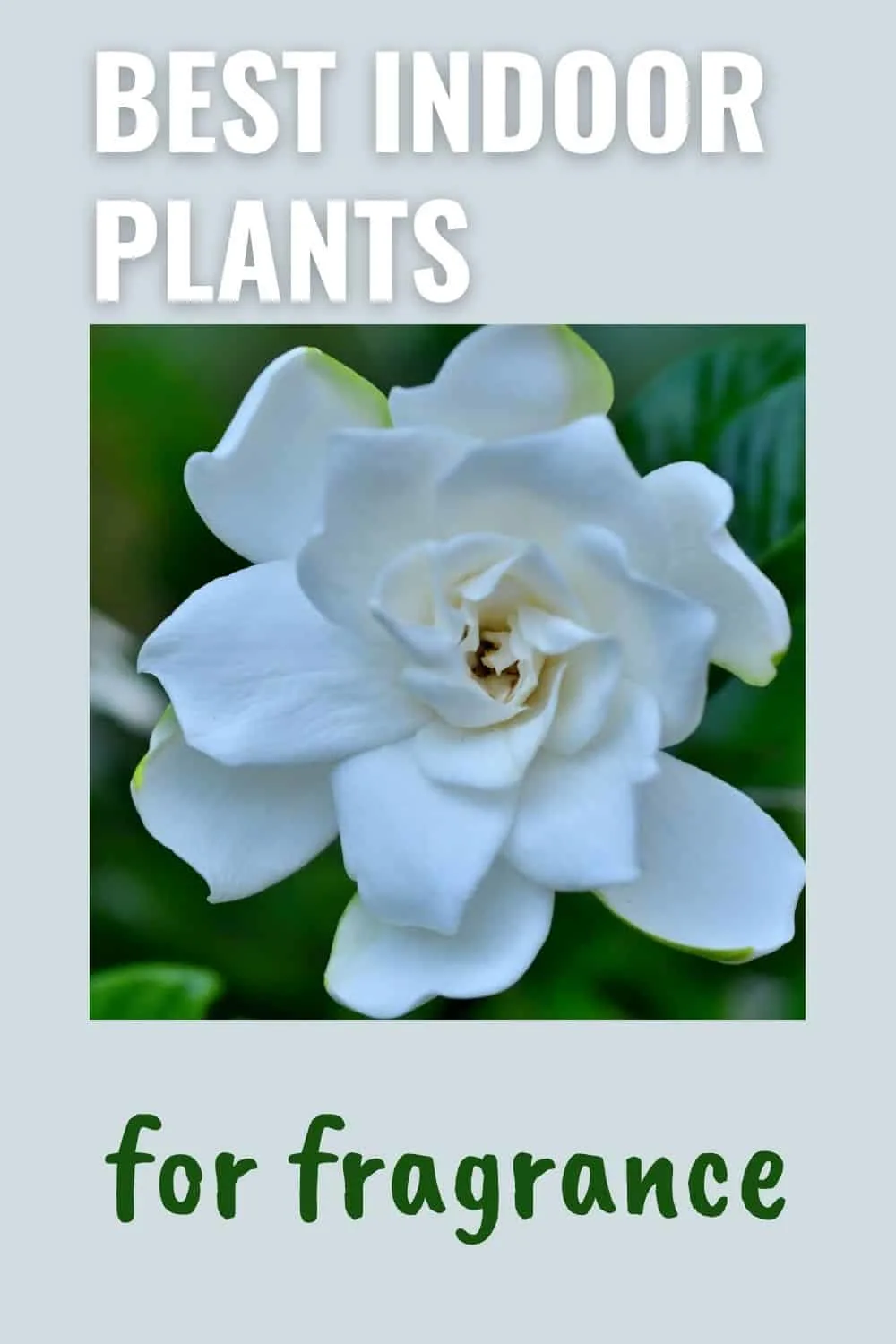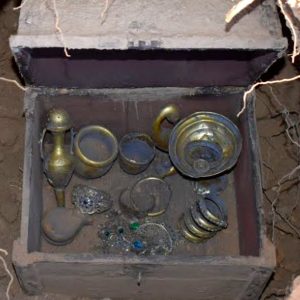If you’re looking for the best indoor plants for fragrance, you’re going to love this list. There are so many great smelling plants available, you may find yourself wondering how you will choose. We’ll cover some of our favorites and tell you why they made the list. And we’ll even throw in some basic care information so that you can decide which ones are really right for you.
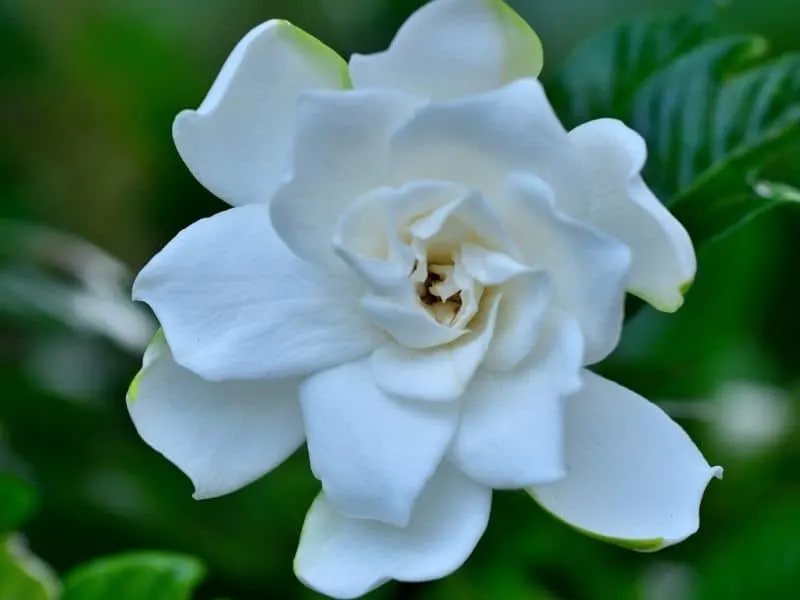
When you think about it, plants do so much for us, and they ask for very little in return. For many people, the joy of keeping indoor plants is both for what we can do for them, as well as for what they can do for us. It can be soothing to tend to your plants daily, and it can be exciting to learn about different types and how to care for them.
They clean our air for us, help us feel happier and less stressed, and provide oxygen. They look pretty, and some of them look cute or interesting and unique. But the plants on this list go one step further and also smell nice for us. These fragrant varieties can even give you a natural alternative to air fresheners.
Now, if you’re looking for some plants that smell good that you can use in your home, where do you begin? The first step is to consider your experience level with indoor plants. How much do you know about them? How well do you usually do with new plants? Flowering plants can be a bit pickier when it comes to care, so some people struggle with them when they are new to houseplants. At the bottom of the page, you’ll find some tips for helping your indoor fragrant plants thrive!
Now, let’s take a look at some great choices for fragrant houseplants.
1. Azores jasmine (Jasminum azoricum)
If you have any experience with plants at all, you’re probably not surprised to see jasmine on this list. There are different types of jasmine, and they all smell really wonderful. This type will have the best scent when it flowers in spring through fall. However, it can also open blooms in winter when it’s healthy and keep that beautiful scent going. It smells a bit like gardenia and in order to thrive, will need warmth and sun. We recommend placing it in a south-facing window.
2. Night blooming jasmine (Cestrum nocturnum)
Here’s another jasmine for our list. Like the jasmine listed above, it smells really nice. The flowers release their beautiful, intoxicating scent in the evening, which is where it gets its name. The blossoms can happen year-round when this plant is properly cared for. You will need to prune this jasmine to help it keep its shape. A sunny Southern window is where it will feel most at home.
3. Lemon balm (Melissa officianalis)
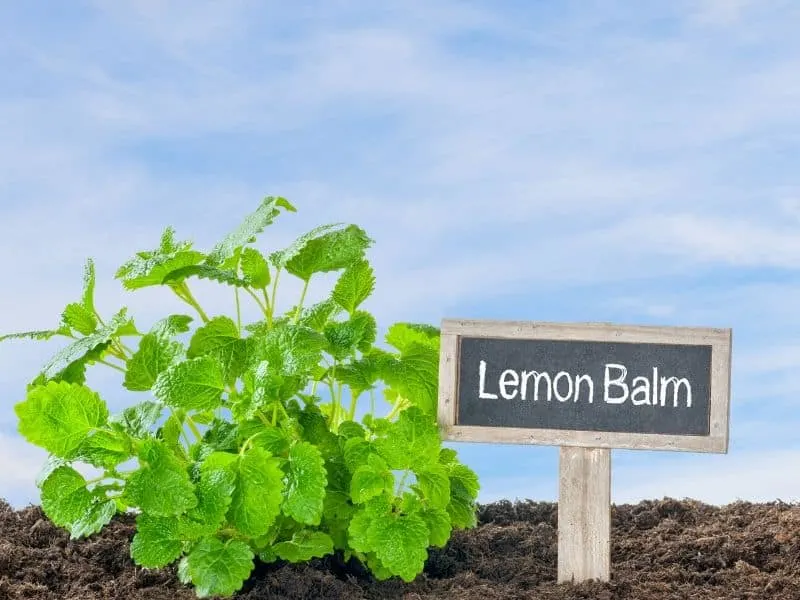
Lemon balm is a member of the mint family. It is actually a bushy perennial, and this herb has a beautiful scent. When the oval leaves are rubbed between the fingers, you can capture the fragrant, lemon-like scent.
In addition to smelling great, this is a nice one to have around because you can use it for flavoring food, to make tea, and it’s easy to grow. Just place this herb on a window ledge where it can get up to 5 hours of direct sunlight each day and it will do well for you.
4. Marino blue heliotrope (Heliotropium arborescens)
Another great option of fragrant indoor plant for you is the Marino blue. It smells like vanilla honey, and it grows pretty purple flowers that look nice and add a pop of color to any room. The plant can flower year-round and when it grows longer, can trail so you might support it with stakes.
5. English lavender (Lavandula angustifolia)
English lavender smells soothing and divine and if you have it in your home, you can enjoy its scent while also learning more about the many other benefits it can bring to your home. There are different varieties of lavender, but English lavender is the best if your goal is the scent. They’re easy to care for but need lots of light. English lavender needs a spacious pot and plant food monthly to really do its best indoors.
6. Spearmint (Mentha spicata)
You can’t go wrong in the scent department with spearmint. The leaves of this plant will release their minty scent even if they are warmed by the sun. They are easy to grow, require little maintenance and are not prone to bugs or pest infestation. If you place it in a sunny window with your other herbs, it will do its best. You can harvest the leaves for tea or cooking.
7. Gardenia (Gardenia jasminoides)
The gardenia makes every list that talks about great-smelling plants because it smells beautiful. They can sometimes be a bit high maintenance, especially when grown outdoors.
When you choose gardenia as an indoor plant, you have more control over the soil and temperate conditions, and the watering, so they do better. They need bright, indirect light and to be kept at temps above 60 degrees at all times. Gardenia also needs a moist soil/growing medium and bi-weekly feedings to really thrive.
Want more indoor plant ideas?
9. Citrus tree (Citrus spp.)
Next on the list is the citrus tree. We’re not talking about full-sized trees that grow outdoors (although those smell nice, too). We’re talking about the miniature (or dwarfed) trees you can buy for lemon, lime, orange, or other citrus scents. They need a lot of sunshine to do well, and lots of water.
10. Silverdrop eucalyptus (Eucalyptus gunii)
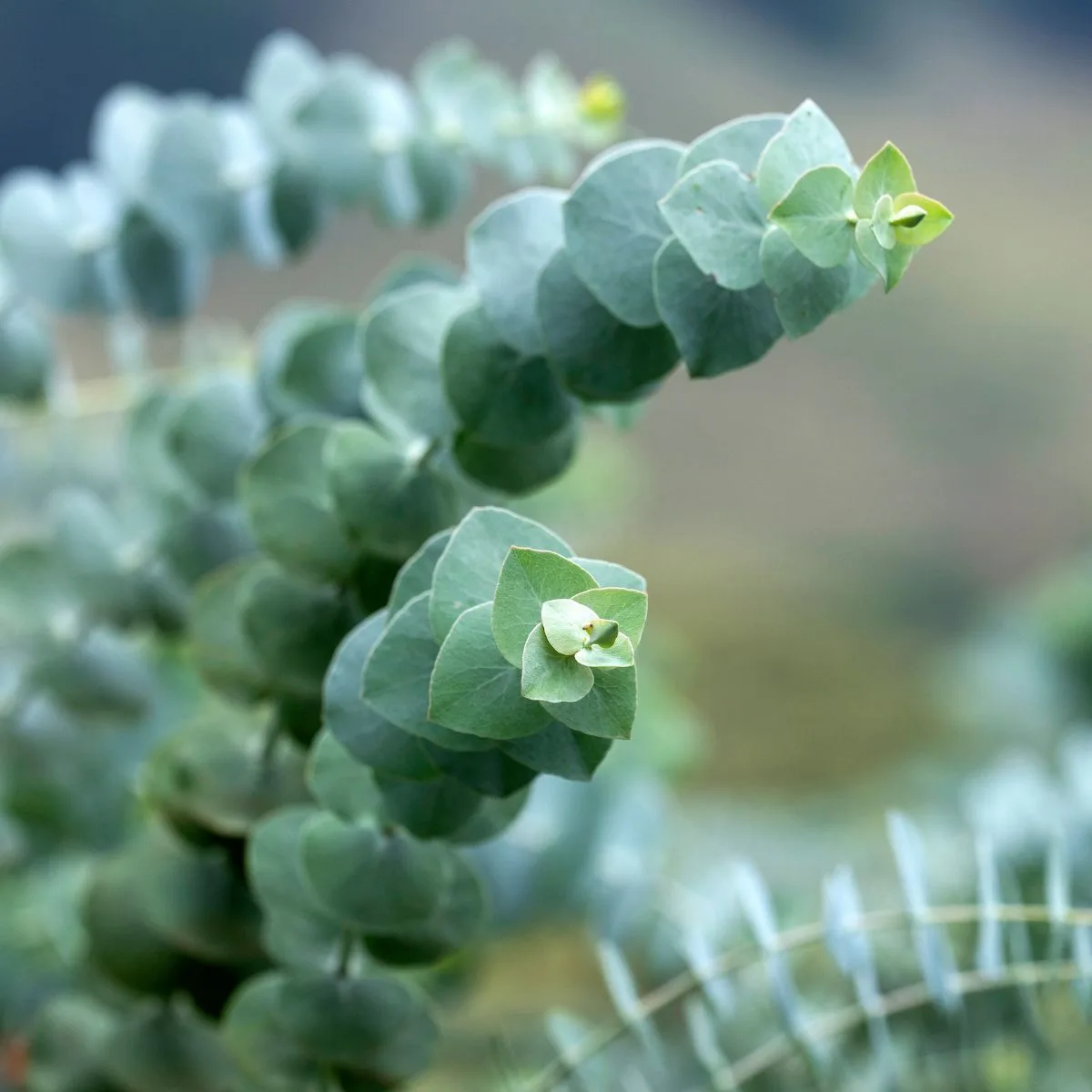
Eucalyptus is one you might already be familiar with due to its wonderful scent. The silver blue-green leaves add to its beauty and set it apart from other indoor plants in your collection. It likes a sunny south-facing window and is fairly low-maintenance.
11. Stephanotis (Marsdenia floribunda)
The stephanotis has dark green leaves and is a vining plant that will produce wavy, sweet-smelling flowers in the spring and summer. The plants look great year-round but really shine when in bloom. It needs bright light and also a support structure to climb on. Otherwise, it’s fairly easy to take care of, at least compared to other indoor flowering plants.
12. Sweet bay (Laurus nobilis)
Sweet bay is an evergreen tree, low-maintenance, does well as an indoor plant, and has a nice herbal scent with a hint of floral notes. Its thick, glossy leaves take an elliptical shape and it’s great for adding texture and a pop to your other houseplants. They like full to part shade and you can even clip off leaves now and then to use as flavoring.
13. Spanish lavender (Lavandula stoechas)
Another type of lavender, Spanish lavender is a wonderful choice when you want fragrance. Also called Bandera Purple, this flowering plant does best in high light. You should also allow the soil to dry out between watering for best results. If you’re having trouble getting them to bloom, you can set them outside for a bit in the summer.
14. Tea rose begonia (Begonia spp.)
Another great begonia to consider is the tea rose. Like other begonias, it has a beautiful scent. It’s pretty easy to care for but loves medium to bright light when kept indoors. It also likes high humidity and warm temps. If your home is especially dry, you may need to mist regularly. The flowers bloom in a pink-to-white color that is the reason for its nickname of “tea rose”.
15. Lily of the valley (Convallaria majalis)
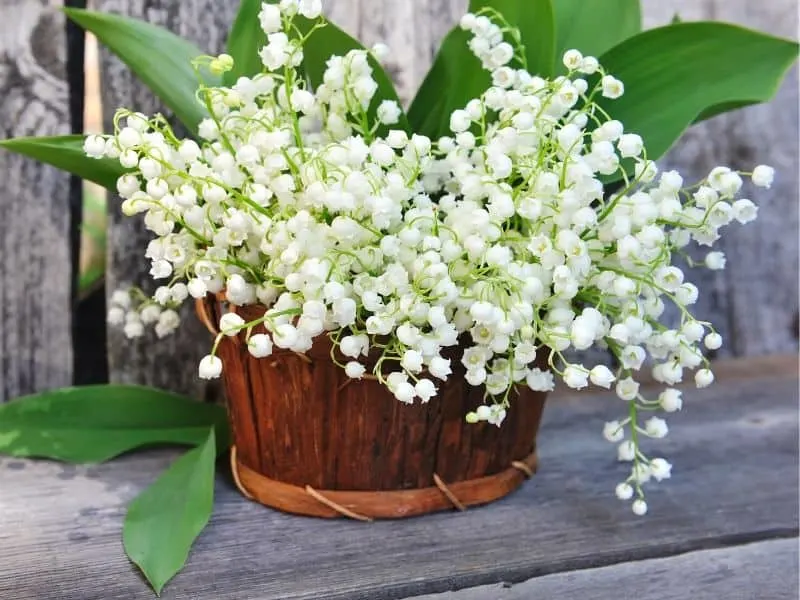
Lily of the valley is a beautiful blooming plant that has delicate bell-shaped flowers that smell wonderful (but a bit perfumey so be careful if you have allergies). The leaves make nice greenery when the plant is not in bloom but the scent from the blooms will definitely give fragrance to your entire space. They’re fairly easy to care for but might not be the best choice for beginners unless you do some more research into proper care first.
16. Angel’s trumpet (Brugmansia x candida)
Angel’s trumpet is a large, tropical tree that is native to Ecuador. It releases its scent in the evenings and it is named for its numerous, large, downward-facing trumpet-shaped flowers. They can come in a variety of shades of yellow, pink, orange, and even white. It’s definitely a conversation piece plant as well. However, it is highly toxic and not recommended if you have pets or small children.
17. Frangipani (Plumeria spp.)
Frangipani is native to Mexico, Central America, the Caribbean, and Hawaii but can also be kept as a houseplant nearly anywhere, with the right care and environment. You probably are most familiar with this plant as being the one whose flower is used to make leis. They can flower in shades of red, yellow, pink, and white, and they are very fragrant, especially at night. When kept indoors, this plant will need lots of bright, direct sunlight. You should water deeply but allow it to dry between each watering.
18. Blue passionflower (Passiflora caerulea)
The blue passionflower is another flowering plant with a beautiful, intoxicating scent but also a very striking physical appearance. It’s definitely an attention-getter. It has striking petals, filaments, stamens, and stigmas so the entire thing in blooms looks a bit like a kaleidoscope image. It puts off a minty, fruity-type aroma. It will do best in lots of sun, high humidity, and normal household temperature. It does like to have a nice, spacious pot for its roots.
Here are some tips to keeping your fragrant plants healthy and encouraging them to flower
Since most fragrant plants are also flowering plants, here are some things to know about their care to get the best results.
Master perfect lighting – Most flowering plants need a lot of light, and they may not get enough in even your sunniest window. You can supplement the light they get from windows with some grow lights.
Put them outside – Sometimes you may also just need to put your plants outside for a bit in the summer. This allows them to get the long, bright, direct light that they need to bloom at their best. You can give them a major boost in the summer outside and then bring them indoors before the temperatures drop cooler.
Repot when needed – Another important thing to learn is when to repot. Flowering takes a lot of a plant’s energy, and they need their nutrients replenished more than non-flowering plants. You can fertilize with an appropriate plant food when needed and also repot the plants in new enriched potting soil every year.
Boost the humidity – Most flowering plants love humidity. If you have especially dry air, you’re going to need to work against this. Even if you have normal humidity levels in your home, your plants may require more. You can boost this with pebble trays below the planters, by misting daily or investing in a humidifier. Grouping high-humidity plants together or putting them in a terrarium can also help.
The beauty of houseplants is that you can manipulate the environment to simulate their natural one. The more you learn how to do this, the better your indoor plants will do.
Conclusion of Best Indoor Plants for Fragrance
Now you have a whole list of great indoor plant choices that keep your home smelling great. Maybe you already have some of these plants, or perhaps they are all completely new to you. Whichever ones you decide to go for, just spend some time researching the best way to care for them. While we’ve tried to provide you with some basics here, this is in no way a complete care guide to each individual fragrant plant.
When you want your plants to be successful and live a long, healthy life with you, it pays to take time to learn about each one. If the plants on this list are completely new to you, maybe start with just one at a time. Once you learn about it and get it thriving, you can add on another, and so on. Or, if you feel like a challenge and have the time to dedicate to their care, just go for it with as many as you want!
Which plants from our list do you most want to try for yourself? And do you have any fragrant plants in your outdoor garden?
